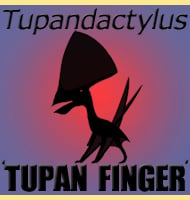Liaodactylus
In Depth Liaodactylus is a genus of pterosaur that lived in Asia during the late Jurassic. Liaodactylus is noted for having numerous small teeth in comb-like structures that meshed together when the jaws closed. This would have allowed Liaodactylus to feed by filtering out small invertebrates from water and soft sediment. Further Reading - Earliest … Read more
